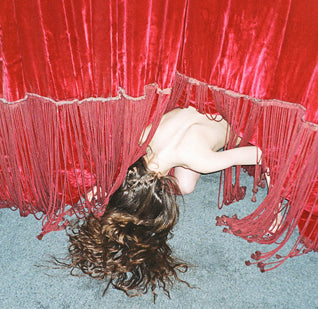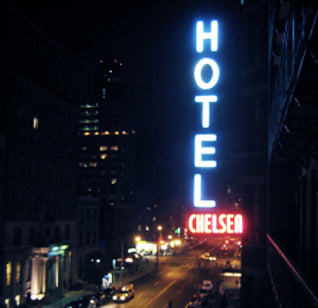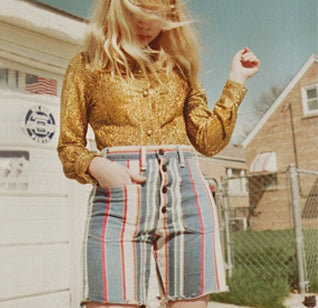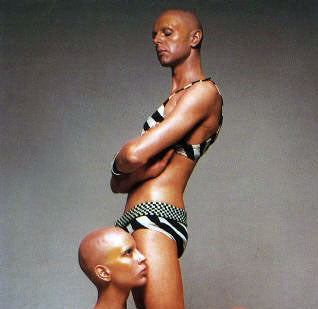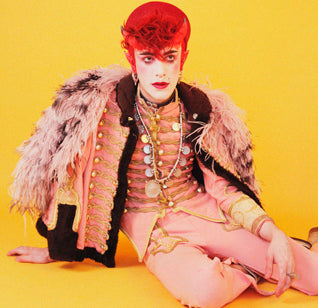THE FUTURE CAN WAIT
Zavier Ellis of Charlie Smith gallery talks Football at Frieze and Charles Saatchi.
by Maria Raposo
Between mouthfuls of banana, Zavier Ellis tells me how busy he’s been. Artist, curator, and gallerist, it’s no surprise when he says, “I’m proactive – I don’t like to sit around”. He started young, curating his first show at 18 and opening his first gallery at just 24. Today he’s the man behind Charlie Smith gallery and co-founder of The Future Can Wait, an annual exhibition which partners with Charles Saatchi’s New Sensations.
With a deep and booming British accent, he’s articulate, speaking through a hedgerow of beard. His gallery is perched above an East London pub, so on a Thursday afternoon we sit amidst the bar’s empty tables. Zavier is a respected figure on the London arts scene with a knack for identifying up and coming talent. “I enjoy the process of scouring college shows and spotting artists who appeal to me”.
He looks for weighty subject matter coupled with accomplished technique, steering clear of purely conceptual art which he considers “very dry”. He’s not the only one wary of work that has no appeal beyond it's idea: “Collectors have become more cautious since the economic crash. They like to enjoy the work they acquire and we can’t deny that art is a visual field.”

Photography by Emma Arvida Byström, 2013
On the subject of collectors, the conversation turns quickly to Charles Saatchi and Zavier has strong views: “Saatchi has shown huge support for emerging artists over the last decade – he always puts his money where his mouth is”. He jumps to his defense when I bring up the negative reviews the collector received recently: “People make a sport of disliking Saatchi’s shows”, he says, making an example of The Guardian’s Adrian Searle, who referred to a past Saatchi show as “a study in blandness”. Earnestly Zavier says, “Remember, critics are trading on Saatchi’s name, trying to create their own controversy.”
It’s possible that Zavier’s loyalty stems from the fact Saatchi seems to be a big spender at Charlie Smith, buying on Zavier’s recommendation. But the art mogul is not the only one impressed by the emerging talent Zavier uncovers – his audience is international and he makes sales to major collectors from all around the globe.
Zavier surprises me – he seems authentic, intelligent and completely unguarded. Our conversation illuminates his forward thinking perspective of the art world yet he seems incredibly down to earth. When we’re not talking about the art market, his easy demeanor gives the impression of just a normal guy – sprawled across his wooden pub chair, sharing his passion for football.

John Stark, 'The Atonement', 2013. Exhibited at The Future Can Wait.
He refers to the artists he works with as “like a football squad”, with his eleven gallery artists at the core. He’s a Liverpool fan and often plays football himself alongside team mates, artist, Mike Nelson and Time Out's former art editor, Ossian Ward – an unexpected merge of sport and art.
Leaning closer, he lets me in on his “biggest art dream”. He wants to organize a football game between England’s cultural elite and the rest of the art-world, to take place at Frieze week one year. “But what I really want to do is England versus Germany”, he says, taking another slurp of his drink. It’s an ambitious idea but I’m sure art enthusiasts would flock to watch gallerists and dealers clamor for victory in the mud of Regent’s Park.
He compares making art to playing football: “It provides me with a release – like fighting, although I haven’t done that in a while.”
Zavier is also an artist, making his curatorial projects seem almost selfless. I ask, wouldn't he rather dedicate the time he spends at Charlie Smith promoting his own work? “I think I need both to keep my sanity”, he says thoughtfully. He compares making art to playing football: “It provides me with a release – like fighting, although I haven’t done that in a while.”
His art is raw and physical. His pieces “feed off the surfaces of the city”, taking inspiration from the urban landscape; graffiti tags, shop signs and road markings. With considered subject matter, he reveals “I do a lot of reading and my paintings feed off my intellectual pursuits”. Often sharing his philosophical interests with his artists, he admits their personality often affects his choice of whether he should represent them.
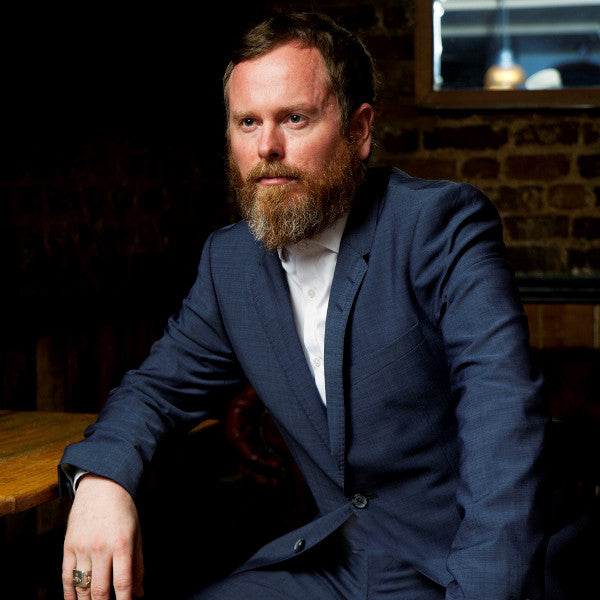
“Two of my main qualities are instinct and authenticity,” he says. “I am too genuine to project a false personality onto my gallery artists, so it’s inevitable that friendships happen.” These close relationships seem to nurture success; he mentions Eric Manigaud – an artist of his who recreates archival photographs on a large scale. “I showed his work for the first time last year. Pieces sold to Saatchi and to some major Australian and German collectors.”
“Abstract work is becoming more fashionable”, Zavier tells me and with abstract artists like Alex Gene Morrison and Gavin Nolan on his books, he obviously takes note of art market trends. That evening, a cluster of people gather to celebrate the opening of Charlie Smith’s latest exhibition, featuring artist Tom Ormond. The solo show sees abstract spectral structures illuminate dark, dilapidated rooms and Ormond’s works is just one example of how Zavier’s considered theories on the market inform his choices. Armed with such certainty, the future can only hold success.
See more artworks from The Future Can Wait on Kids of Dada.












